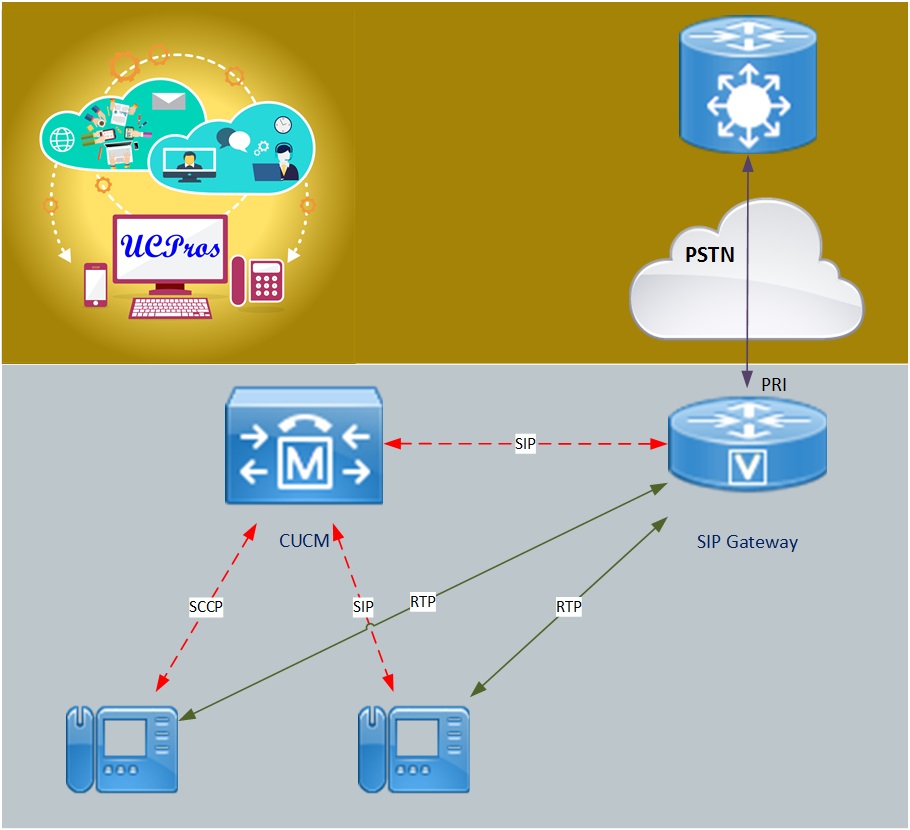SIP 100 Trying response code is part of the 1XX SIP Response Codes and one of the most commonly used SIP response codes in the SIP stack.
SIP works on a request-response model and 1xx SIP response codes are there to provide information on the status of network-related processes, SIP 100 Trying is one of them.
Category: SIP
SIP 404 Not Found – Understanding SIP 404 Response Code
SIP 404 Not Found response belongs to the 4xx SIP code group.
A group of SIP codes that indicate a request failure and constitutes a number of codes used by SIP for communicating errors and failures.
In this blog post we will explore the SIP 404 Not Found response code and touch the different available SIP Response Codes.
But, first what is SIP?
How To Properly Configure Cisco CUBE HA
Cisco CUBE HA is becoming more prevalent with the CSR1000 or vCUBE, therefore with its popularity, learning how to configure Cisco CUBE HA has become an essential skill that UC engineers should have.
Continue reading How To Properly Configure Cisco CUBE HACisco SIP SRST Configuration
Cisco SIP SRST Configuration is the process of providing backup to external SIP Call control (IP-PBX) through the provision of the basic registrar and re-direct server or back-to-back user agent (B2BUA) services.
Continue reading Cisco SIP SRST ConfigurationConfiguring Options Ping on CUBE
Configuring options Ping on CUBE, and learning how to busy out a dial-peer when a SIP trunk goes down, are essential skills that UC engineers are expected to be good at. In this blog post, we will explore the different SIP options available.
Continue reading Configuring Options Ping on CUBEUsing Wireshark SIP Analysis for VoIP scenarios
Troubleshooting VoIP issues can be troublesome. When something goes wrong, the lack of direct visibility as to what is occurring on the network with SIP and RTP packets can initially be intimidating to network and voice engineers. However, Wireshark SIP analysis turns ordinary engineers into superheroes, allowing them to see deep into the network and determine exactly what is happening.
In a series of previous articles, we took a look at several methods that can be used to capture voice packets on a network. We also introduced the Wireshark packet sniffing software, providing you with a solid foundation for understanding how captured packets are obtained and stored.
In this article, we’ll get our hands dirty by examining a real voice packet capture from a production network. We’ll go through the whole scenario, delving deeply into the details of the voice packets being exchanged. Let’s get started!
Continue reading Using Wireshark SIP Analysis for VoIP scenariosSIP Response Codes Explained
Why don’t we start with some trivia?
Did you know that SIP response codes are based on HTTP/1.1 response  codes?
codes?
Actually, SIP response codes are the extent of the original HTTP ones and even define a new class with more response codes. I’ll let you know which one when we get to it.
That said, not all of the HTTP codes are relevant and mapped to SIP response codes, so if you know some HTTP, don’t expect to find them all in this list.
Continue reading SIP Response Codes Explained
Cisco SIP Gateway configuration: The Ultimate Guide
 Connecting the Cisco IOS Voice Gateway to CUCM via SIP has been the preferred way to do it in the past couple of years.
Connecting the Cisco IOS Voice Gateway to CUCM via SIP has been the preferred way to do it in the past couple of years.
The slowly dying H323 protocol (ISDN based) is not being developed anymore while SIP (HTTP based) became the industry standard for VoIP. So whenever PSTN connection is implemented via an IOS Voice Gateway, the choice should be really between SIP & MGCP.
This is how it’s done, step by step, using SIP.
Continue reading Cisco SIP Gateway configuration: The Ultimate Guide
How to punch SIP One Way Audio in the face
And why should you punch it in the face?
To be honest, mostly revenge…
Because one-way audio and no audio problems hurt.
Really bad.
Especially when they hit you by surprise, as they usually do.
CUCM SIP Call Flow Troubleshooting
 There is no way around it,
There is no way around it,
finding the SIP call flow is the first thing you have to do when you are facing a SIP call failure.
Why?
Easy.
Because first of all, you have to understand whether this is a call routing problem or signaling/media compatibility issue.
SIP call flow helps you understand just that, and in a lot of cases, you can pinpoint the problem just from looking at the SIP call flow.